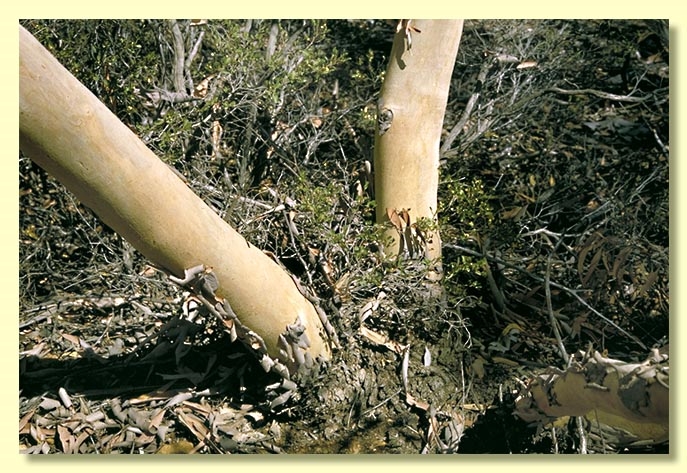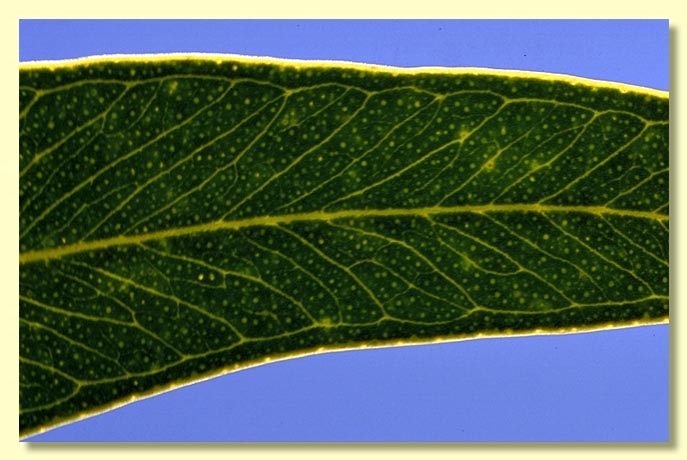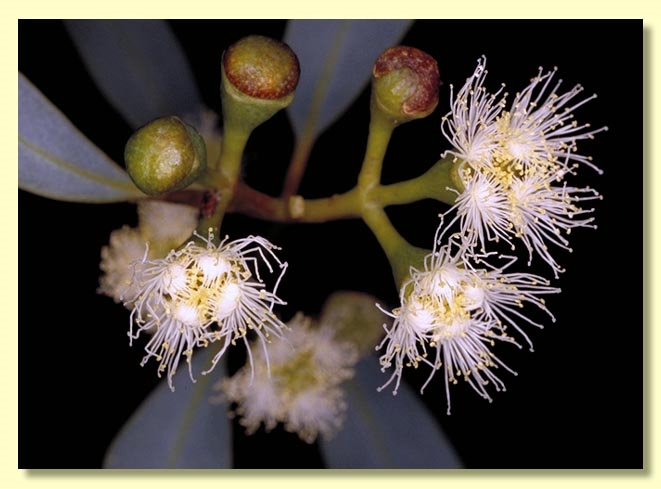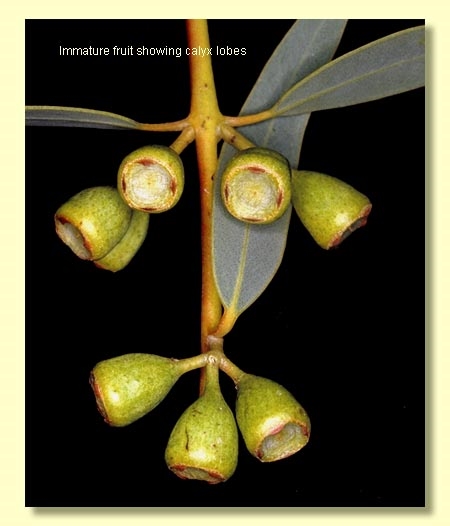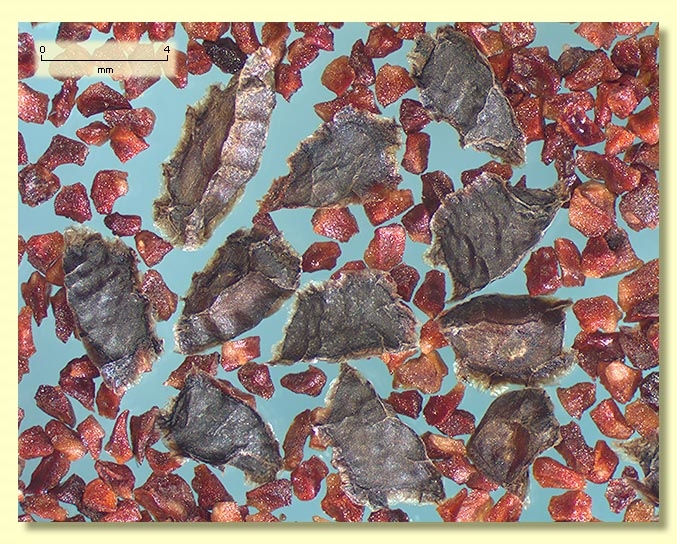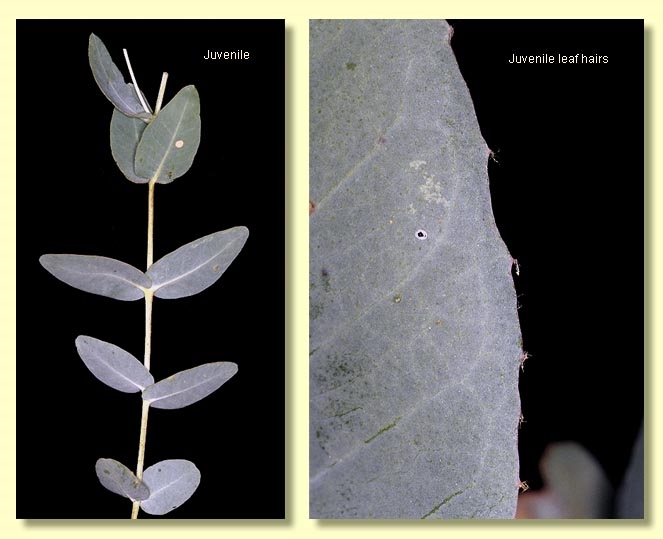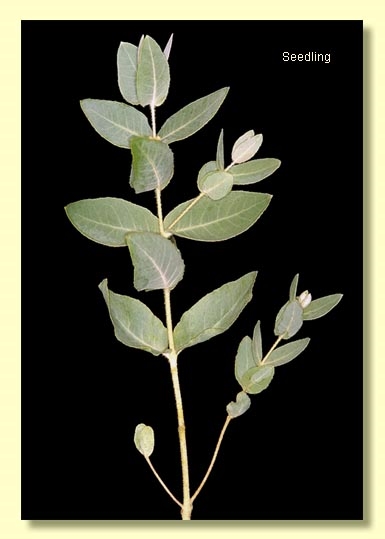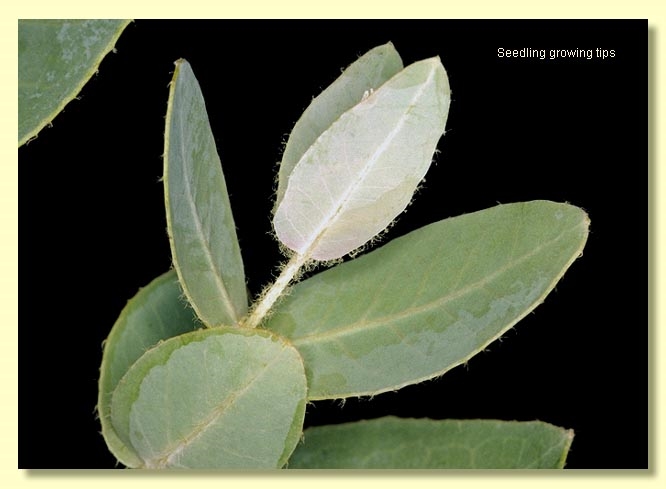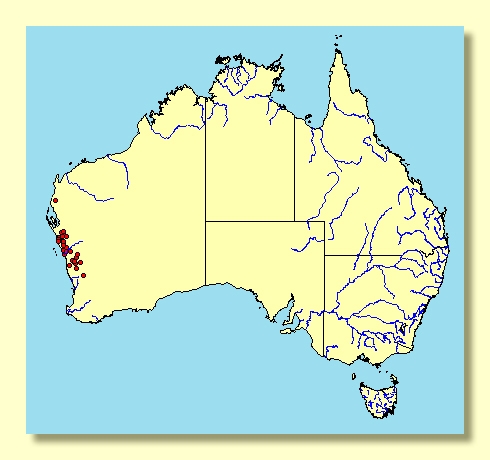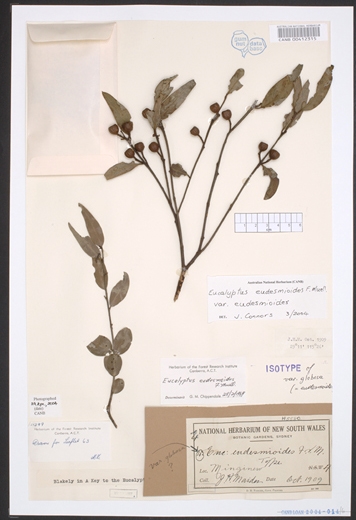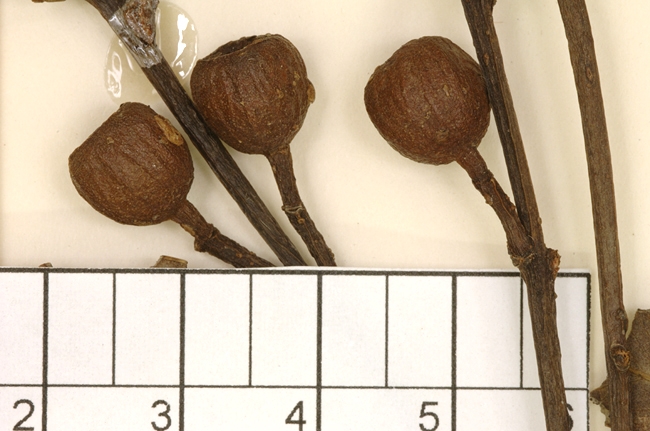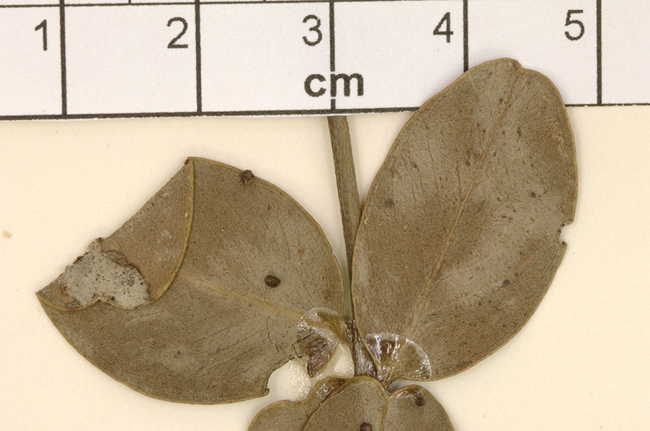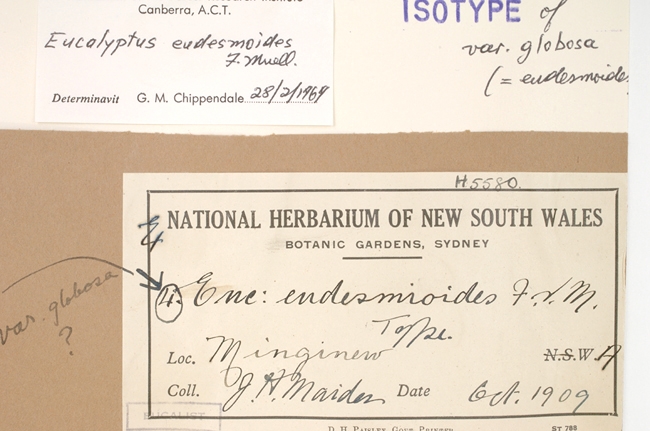Eucalyptus | Eudesmia | Limbatae | Heteropterae | Tetraedrae
Euclid - Online edition
Eucalyptus eudesmioides subsp. eudesmioides
T: Western Australia: Murchison River, N of Mt Curious, A.Oldfield s.n.; holo: MEL; iso: K.
Eucalyptus eudesmioides F.Muell. var. globosa Blakely, Key Eucalypts, 69 (1934). T: Western Australia: Mingenew, Oct. 1909, J.H.Maiden s.n.; holo: NSW; iso: CANB.
Bark usually smooth throughout, white to grey to brown, sometimes cream to yellow to pink; occasionally with a short stocking of grey to brown rough fibrous bark.
Branchlets sometimes slightly glaucous; oil glands present in the pith (sometimes obscurely so).
Juvenile growth (coppice or field seedlings to 50 cm): stems square to rounded in cross-section, glaucous to non-glaucous, hairy to glabrous; leaves opposite and sessile (rarely shortly petiolate), ovate to cordate, 2.5–7.5 cm long, 1–3.5 cm wide, base amplexicaul to rounded to tapering, apex round to broadly acute, glaucous to grey-green, lower leaves, upper leaves glabrous.
Adult leaves opposite to sub-opposite, petioles 0.3–1 (1.3) cm long; blade lanceolate to falcate, (3)4–8(10) cm long, 0.6–1.5(1.7) cm wide, base tapering to petiole, concolorous, dull, grey-green to green, side-veins acute, reticulation sparse to moderate, intramarginal vein present, oil glands mostly island.
Inflorescence axillary single, peduncles 0.3–1.3 cm long, buds 3 per umbel, pedicels 0.3–0.7 cm long. Mature buds clavate (0.5–0.7 cm long, 0.4–0.5 cm wide), hypanthium four angled, not glaucous, outer perianth whorl minutely sepaline, inner whorl operculate, operculum rounded to flattened, stamens grouped in four clusters, inflexed, anthers oblong, versatile, dorsifixed, dehiscing by longitudinal slits (non-confluent), style short, stigma tapered, locules usually 3 or 4, the ovules arranged in 4 distinct vertical rows on the placentae. Flowers whitish.
Fruit pedicellate (pedicels 0.2–0.5 cm long), cylindrical to barrel-shaped, 0.7–1.3 cm long, 0.6–1 cm wide, usually four-angled, disc descending, valves 3 or 4, enclosed or near the rim.
Seeds brown to black, flattened-ovoid with a ragged flange around the edge, sides ribbed, 3–4 mm long, dorsal surface shallowly lacunose, surface smooth not deeply pitted, hilum ventral.
Cultivated seedlings (measured at node 10): cotyledons reniform; stems round to square in cross-section, glaucous and hairy, leaves sessile, opposite, ovate to cordate, 5–8 cm long, 2.5–4.5 cm wide, glaucous, margins entire or irregularly toothed, apex broadly to finely acute, base amplexicaul, lamina hairy.
Flowering has been recorded in February, March and April.
Eucalyptus eudesmioides is a species of mallee endemic to Western Australia, extending from the northern part of the Darling Range and western part of the northern wheatbelt to Shark Bay; also further north at Warroora (fide D. Nicolle). The bark is smooth throughout or loose and flaky at the base. Adult leaves are opposite to sub-opposite and shortly petiolate and inflorescences are three-flowered.
It contrasts with the closely related E. gittinsii, which has larger, distinctly petiolate, sub-opposite to alternate adult leaves and which is prominent in the Kalbarri region.
In earlier editions of EUCLID we regarded the following as three (informal) subspecies but the third of these is now included at species level:
E. eudesmioides subsp. eudesmioides
The leaves are dull, light green to grey-green and it occurs from the wheatbelt to Kalbarri with an outlier near Warroora.
E. eudesmioides subsp. Pallida
A mallee or small tree, the branchlets, leaves, buds and fruits are glaucous. It occurs in the Wannoo-Shark Bay area and to east of Woodleigh station.
Eucalyptus selachiana
A mallee restricted to south of Shark Bay and distinctive by the glossy green leaves, and fruit which are a little larger but with some overlap in dimensions.
All three taxa are regarded by other authors as species.
Eucalyptus eudesmioides belongs in Eucalyptus subgenus Eudesmia because of the combination of cotyledons reniform in shape and folded and clasping in embryo, buds with the calyx free and evident as four small teeth around the midline of the bud. (Sections Ebbanoenses and Reticulatae in this subgenus have the calyx fused to the corolla and evident as four small teeth at the apex of the bud.) Within subgenus Eudesmia, E. eudesmioides belongs in the Section Limbatae, series Heteropterae, subseries Tetraedrae, that is further characterised by having seedling leaves with stellate hairs, the presence of oil glands in the pith of the branchlets, stamens arranged in four bundles, flanged ± pyramidal seeds and buds and fruit square in cross-section. The other species in subseries Tetraedrae are E. gittinsii, E. pleurocarpa, E. conveniens, E. extrica, E. erythrocorys and E. roycei. All these species are easily separated from E. eudesmioides by having larger adult leaves, usually wider than 1.5 cm.
subsp. Pallida: Latin pallidus, pallid, referring to the pale glaucous parts.
subsp. Selachiana: stated in the protologue as from "the neo-Latin zoological group name Selachii, sharks and related fishes", alluding to Shark Bay.


